Orchid is a beautiful flower. However, this is a tropical plant that requires special attention and care at home. But unfortunately, not all people attach special importance to this and often do not properly care for their orchids.
Due to improper care, the roots of the orchid will begin to rot or vice versa dry, eventually the orchid will lose its roots and die.
However, there are ways to save an orchid without roots, read this article and you will learn how to do it.
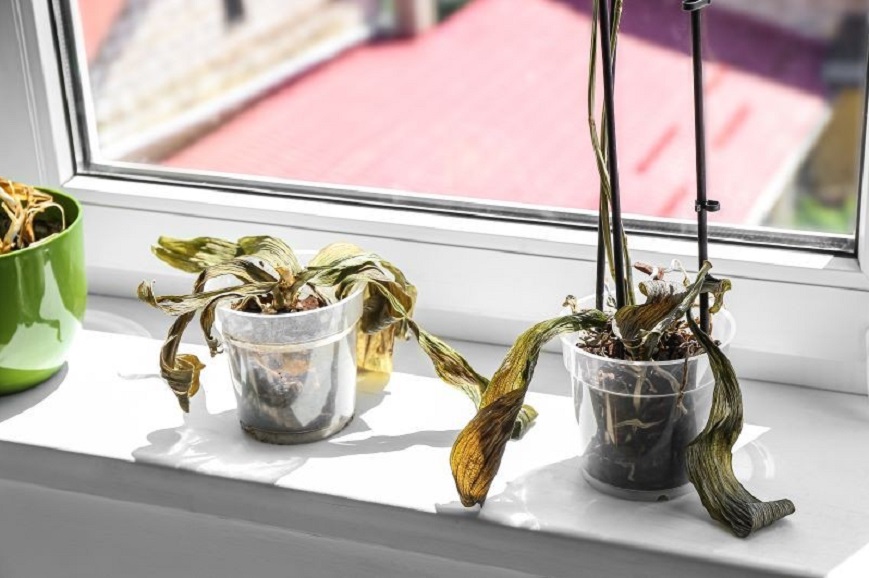
Sensitive orchid roots
Sensitive orchid roots refer to the delicate, fragile nature of the root’s system of orchid plants. Orchids have specialized root structures that are adapted to their natural habitats, such as epiphytic or terrestrial environments.
Orchid roots are typically covered in a spongy layer called velamen, which helps them absorb moisture and nutrients from the air or growing media. This velamen is sensitive to changes in environmental conditions, such as overwatering or drying out.
Overwatering can cause the velamen to become waterlogged, leading to root rot. Conversely, allowing the roots to dry out excessively can result in desiccation and damage to the root’s system.
It is important to provide proper orchid care by ensuring the roots are not constantly wet or overly dry. This often involves a careful balance of watering and providing good airflow around the roots.
Additionally, any physical damage to the orchid roots or orchid stem, such as from repotting or rough handling, can also be detrimental to their health. Handling orchid roots with care and using the appropriate tools and techniques for repotting can help minimize damage.
Overall, the sensitivity of orchid roots highlights the need for attentive and knowledgeable care to ensure the plant thrives and remains healthy.
At some point, numerous orchid cultivators may come across the situation of having an orchid lacking roots. There are various reasons why this occurrence may take place, such as decay, illness, lack of hydration, or infestations.
Why orchids may not have roots?
Orchids are unique and highly adaptable plants that have evolved various mechanisms to survive in different environments.
One of their remarkable adaptations is the ability to grow without traditional roots or with highly modified roots.
Here are a few reasons why orchids may not have roots in the traditional sense:
- Aerial roots. Instead of growing in the soil, orchids often have aerial roots that hang in the air. Aerial roots allow orchids to take advantage of moisture sources that may not be accessible to plants with regular roots.
- Epiphytic growth. Many orchid species are epiphytes, which means orchid stem grow on the surface of other plants, such as trees or rocks. Epiphytic orchids do not need roots to anchor themselves in the soil because they derive their nutrients and moisture from the air and rain. Instead of traditional roots, they utilize specialized structures like velamen or spongy tissue to absorb water from their surroundings.
- Mycorrhizal associations. Most orchids develop symbiotic relationships with specific types of fungi known as mycorrhiza. These fungi colonize the orchid’s roots and assist in nutrient uptake by breaking down organic matter in the environment. In some cases, the orchid may rely more on the mycorrhizal fungi for nutrient absorption rather than traditional roots.
- Pseudobulbs. Some orchids, like the Cattleya and Dendrobium species, have pseudobulbs rather than conventional roots. Pseudobulbs are thick, swollen stems that store water and nutrients. These structures allow the orchid to survive during periods of drought or when nutrients may be scarce.
Pseudobulbs are typically above the ground and play a crucial role in the orchid’s storage and resource allocation.
Overall, the lack of traditional roots in orchids is not a disadvantage but an adaptation that allows them to thrive in diverse environments.
Their unique strategies for obtaining nutrients, moisture, and support have made orchids one of the most diverse and successful plant families on Earth.
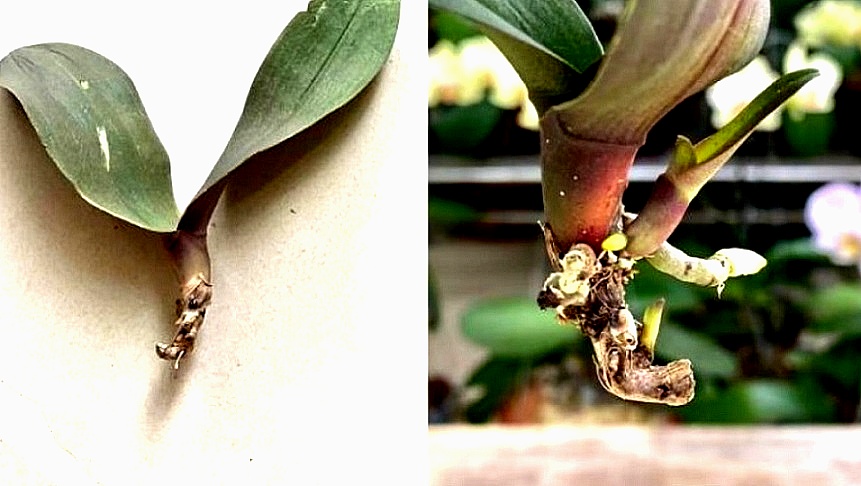
Is it possible to save an orchid without roots?
Saving an orchid without roots can be challenging, but it is not impossible.
Here are a few steps you can take to increase the chances of resuscitating a rootless orchid:
- Assess the condition. Look closely at the orchid and determine if there are any remaining healthy parts. If there are no roots, such as aerial roots, check for green leaves or pseudobulbs. If these are healthy, there is a possibility to revive the orchid.
- Sterilize cutting tools. Clean your pruning shears or scissors with rubbing alcohol or hydrogen peroxide to minimize the risk of introducing any pathogens.
- Cut the dead parts or root rot to stimulate root growth. Carefully prune away any dead or decaying portions of the orchid. This promotes airflow and reduces the risk of spreading diseases.
- Soak in water. Prepare a bowl of lukewarm water and immerse the remaining healthy parts of the orchid in it. Let it soak for about 15-20 minutes to rehydrate the plant.
- Use rooting hormone. After soaking, apply a rooting hormone powder or gel to the cut ends of the orchid. This can enhance the chances of new root growth.
- Choose a suitable medium. Place the orchid in a growing medium that provides good drainage and aeration. Common options include sphagnum moss, coco coir, or an orchid bark mix. Avoid overwatering, as this can lead to root rot.
- Provide appropriate conditions to stimulate root growth. Place the orchid in an area with indirect light, high humidity, and temperatures that suit its needs. Orchids generally prefer bright but filtered light and temperatures between 60-80°F (15-27°C).
- Mist regularly. Mist the orchid’s leaves and exposed roots daily to maintain adequate humidity levels. This is important since the plant has no roots to absorb moisture from the growing medium.
- Be patient and monitor progress. It can take several weeks or even months for new roots to emerge. Patience is key during this process. Watch for any signs of new growth, such as green shoots or roots, indicating that your efforts are successful.
While these steps can increase the odds of saving an orchid without roots, for example, aerial roots, success is not guaranteed. Some orchids may be too damaged or weakened to recover.
However, it’s worth attempting the rescue if you still see signs of life in the plant.
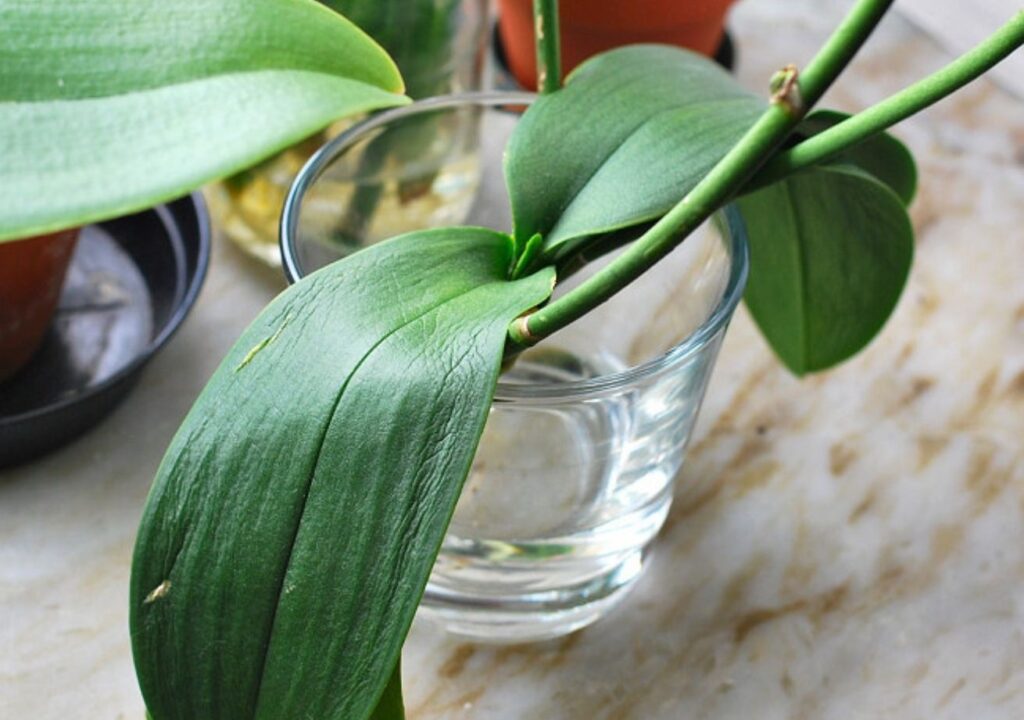
How to use sphagnum moss to save a rootless orchid?
To save a rootless orchid using damp sphagnum moss, which will stimulate root growth, follow these steps:
- Prepare the sphagnum moss. Soak the moss in water until it is fully hydrated. Squeeze out any excess water, but make sure the moss remains damp.
- Remove the orchid from its current pot. Gently remove the orchid from its current container and shake off any loose soil. Carefully untangle the roots if they are tangled.
- Prepare a new pot and potting mix. Choose a clean pot with drainage holes. Add a layer of small pebbles or broken clay shards at the bottom to ensure good drainage.
- Add the sphagnum moss to the potting mix. Create a bed of sphagnum moss at the bottom of the pot. Make a small well in the center to accommodate the orchid’s roots.
- Position the orchid. Place the rootless orchid on top of the sphagnum moss bed. Spread out the roots evenly and position the plant so that it stands upright.
- Cover the roots with moss. Surround the orchid roots with moistened sphagnum moss. Firmly press the moss around the roots, ensuring they are completely covered.
- Fix the moss. If necessary, use twist ties, twine, or non-toxic plant ties to secure the moss and hold it in place around the orchid. Be careful not to tie it too tightly, as this can damage the delicate roots.
- Provide suitable conditions. Place the potted orchid in a warm, well-lit location, but avoid direct sunlight. Maintain humidity by misting the moss regularly, or place the pot on a tray filled with water and pebbles to increase humidity.
- Monitor moisture levels. Check the moisture level of the sphagnum moss regularly. It should be moist but not waterlogged. If it starts to dry out, mist it or add a small amount of water to keep it damp. Avoid overwatering, as this can lead to root rot.
- Be patient. Give the orchid time to establish its new roots in the sphagnum moss, which promotes root growth. It may take some time for new roots to develop and for the orchid to regain its strength. Be patient and wait for signs of new growth before resuming regular orchid care routines.
Remember to consult specific care guides for your type of orchid to ensure you provide the best conditions for its growth and recovery.

How to grow new roots on an orchid?
New root growth on an orchid can be a challenging process, but with proper care and attention, it is possible.
Here are some steps to help you with new root growth on your orchid:
- Remove the orchid from its potting soil. Gently remove the orchid from its pot, being careful not to damage any existing roots. If the pot is too small or if the media is heavily decomposed, it is time to repot the orchid.
- Cut off any dead or rotten roots. Using sterile tools, carefully cut off any dead or rotten roots. These roots will not regenerate and can potentially harm the healthy roots.
- Soak the orchid in water or rooting hormone solution. Dip the roots of the orchid in water or a rooting hormone solution for about 15-30 minutes. This will help stimulate the growth of new roots.
- Prepare a suitable potting medium. Orchids usually prefer a well-draining potting’s medium, such as a mix of orchid bark, perlite, and sphagnum moss. Make sure the potting medium is clean and sterilized.
- Repot the orchid. Place the orchid in a suitable pot with a fresh potting’s medium, ensuring that the roots are evenly spread out. Be careful not to bury the orchid too deep, as the roots need access to light.
- Provide proper humidity and light. Orchids thrive in humid environment. Use a humidity tray or mist the leaves regularly to increase moisture levels. Place the orchid in a location with indirect sunlight, as direct sunlight can cause damage.
- Water the orchid correctly. Water the orchid when the potting medium is about 70-80% dry. Avoid overwatering, as orchids are susceptible to root rot. Ensure that water drains freely from the pot to prevent waterlogging.
- Use root-enhancing products. There are various root-enhancing products available in the market, such as root hormones or growth supplements. Follow the instructions and apply them to the orchid as directed. These products can help stimulate root growth.
- Be patient and observe. Root growth on an orchid takes time and patience. Monitor the progress of the plant regularly and make adjustments as needed. Avoid disturbing the plant unnecessarily.
By following these steps and providing a suitable environment, you can encourage new root growth on your orchid. Remember that different orchid species may have specific requirements, so be sure to research and understand the needs of your particular orchid variety.
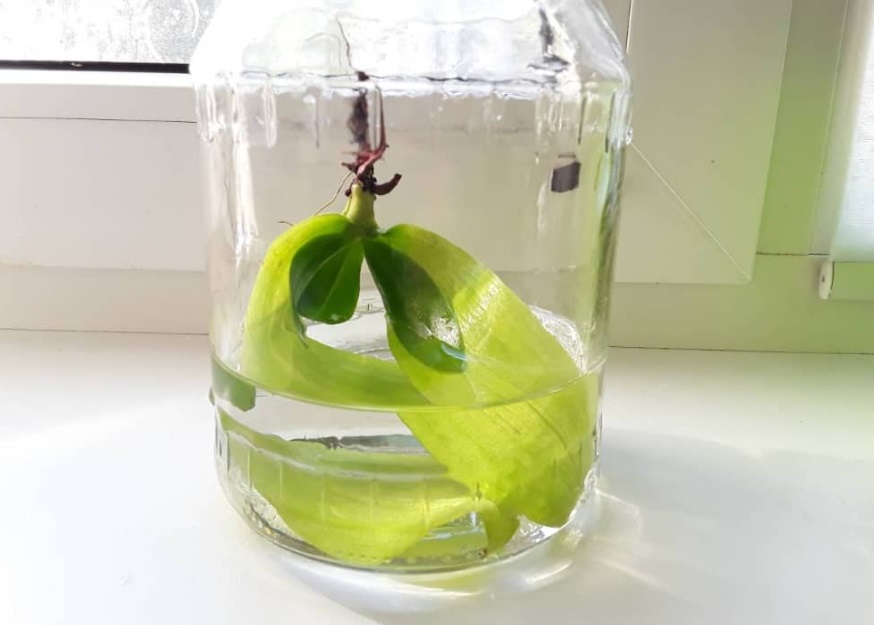
How long does it take for new orchid roots to grow?
The growth rate of new orchid roots can vary depending on various factors such as the orchid species, growing conditions, and the overall health of the plant.
In general, it can take anywhere from a few weeks to several months for new roots to grow. Some orchid species produce new’s roots relatively quickly, while others may take longer.
Factors that can influence root growth include temperature, humidity, lighting, air circulation, and watering practices. Proper care and a suitable environment can encourage healthy root growth.
It is important to note that orchids are slow-growing plants, so patience is necessary when waiting for new roots to develop.
FAQ
Can you save orchid without roots?
It is extremely difficult to save an orchid without roots. Roots are essential for the plant’s survival as they absorb water and nutrients from the environment.
Without roots, the orchid will struggle to take in the necessary resources to sustain itself.
However, if there are still some healthy stem segments or nodes present, it may be possible to propagate new’s roots from them and potentially save the plant.
Can orchid roots regrow?
Yes, orchid roots can regrow. Orchids are known for their strong regenerative abilities and can often produce new roots when the old ones die off or are damaged.
The regrowth of roots is important for the overall health and well-being of the orchid plant, as it is through the roots that the plant absorbs water and nutrients from the growing medium.
How do I save an orchid with dead roots?
How to save an orchid with no roots? Saving an orchid with no roots can be challenging, but it is not impossible. Here are a few steps you can take to potentially revive an orchid with a dead root or root rot:
Assess the seriousness
Check whether the roots are entirely dead or partially alive. Dead roots or root rot are usually brown, mushy, and easily break apart. If there are still some green or firm roots, focus on reviving those.
Trim dead roots
Use a sterilized pair of scissors or pruning shears to carefully cut away the dead and mushy roots. Cut back to healthy tissue to prevent spreading any potential infection.
Soak in water
Fill a clean container with lukewarm water and place the orchid pot in it. Allow it to soak for about 15-30 minutes. This helps rehydrate any remaining healthy roots and removes any salts or chemicals that may have accumulated.
Provide proper orchid medium
Orchids require a well-draining medium such as orchid bark, sphagnum moss, or a mixture of the two. Remove the orchid from its pot and gently shake off any remaining old potting medium. Trim off any remaining dead roots.
Repot in fresh medium
Carefully place the orchid in a new pot with fresh orchid medium, making sure to position the remaining healthy roots securely. Ensure the pot has drainage holes to prevent waterlogging.
Adjust watering routine
Orchids require proper watering to thrive. Depending on the type of orchid, water it when the potting medium has slightly dried out. Overwatering can lead to root rot, while underwatering will stress the plant. Be cautious not to keep it in standing water.
Provide proper humidity and lighting
Orchids prefer higher humidity levels (around 50-70%) and bright, indirect light. Place the orchid near a window where it receives bright but indirect sunlight. Avoid exposing it to direct sunlight that can scorch the leaves.
Keep a close eye on your orchid with no roots and make necessary adjustments to its care routine. Orchids may take time to recover, so be patient and consistent with your care.
Remember, save orchids with dead roots or root rot is not guaranteed, but these steps may increase the chances of revival. If your orchid deteriorates further or shows no signs of improvement, it may be best to consult a professional or seek advice from an experienced orchid grower.
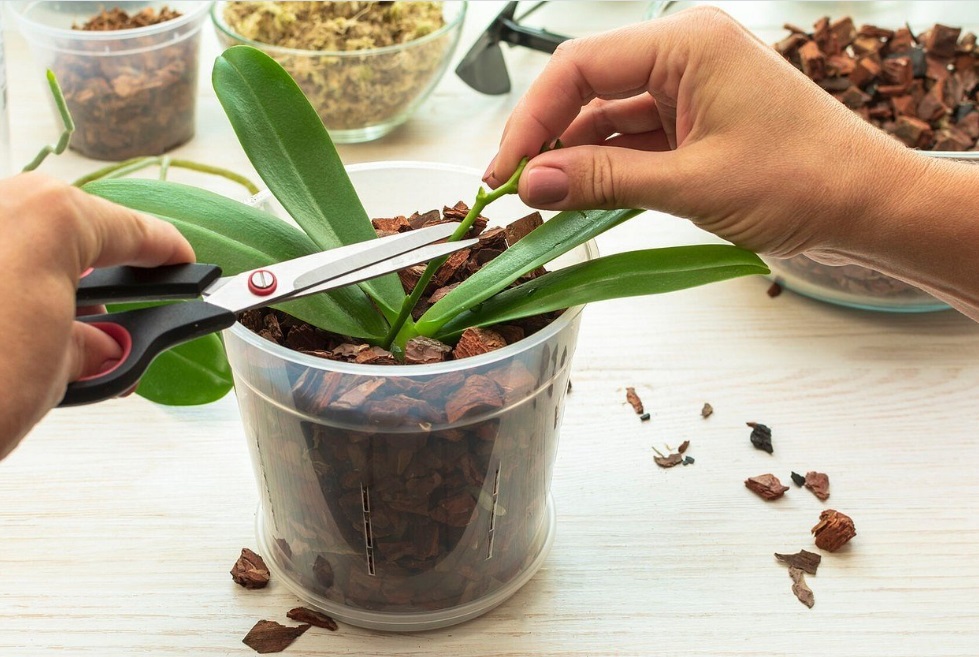
Conclusions
Save an orchid without roots turns out to be a challenging task; it is essential to create conditions that promote root growth. The healthy root is the result of human activities.
Viable roots only grow in good domestic conditions created by humans.
A humid environment is one of the mandatory conditions for growing orchids, as it is their familiar, natural habitat. This will also help to save an orchid.
The old potting mix needs to be changed as it could lead to the development of root rot.
Rotting roots can occur if you add too much water to the pot. If even a few roots start to rot, it may be a sign that the orchid will not survive.
You can save orchids using the plastic bag method and orchid care. Additionally, good air circulation is necessary.
A plastic bag is transparent, which means that the orchid with no roots will receive plenty of light and not rot.
This is an important aspect when using a plastic bag, as many people report orchids into beautiful non-transparent pots, and the flower roots start to rot without light.
The plastic bag needs to be prepared for the orchid by washing, drying, and adding special moss that will help in growing new’s roots.
It is not recommended to repot the orchid from the plastic bag into other types of pots. So, how to save an orchid with no roots?
If an orchid has no roots, it should be placed in a clear plastic bag and properly cared for to ensure a healthy orchid.
Many orchid growers recommend using moss and creating a humid environment to prevent root rot. This is crucial for the root system to thrive.

